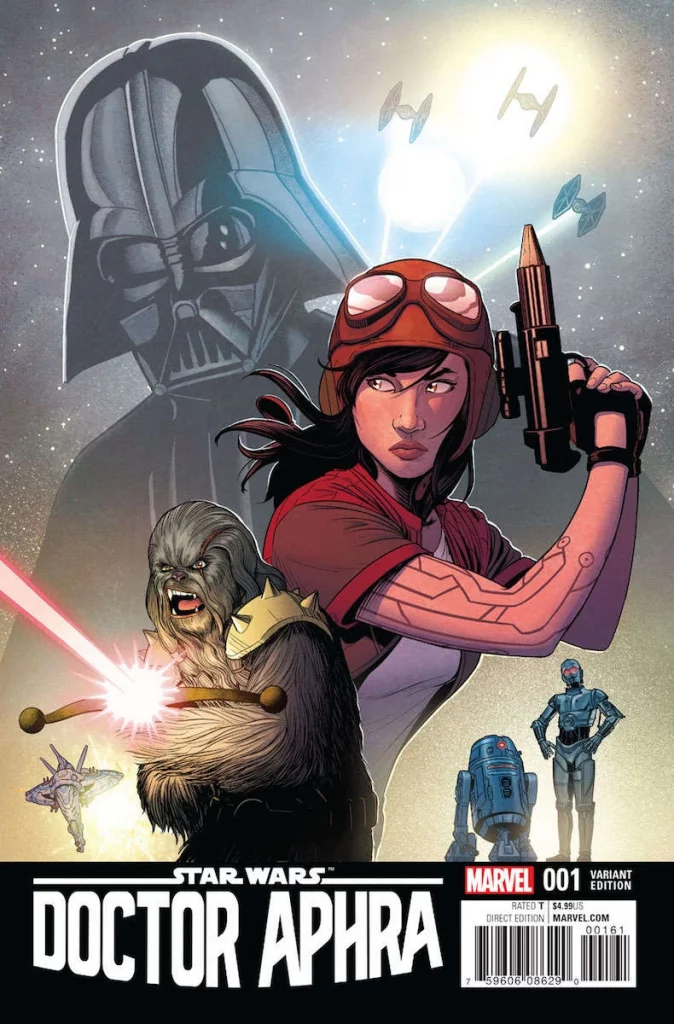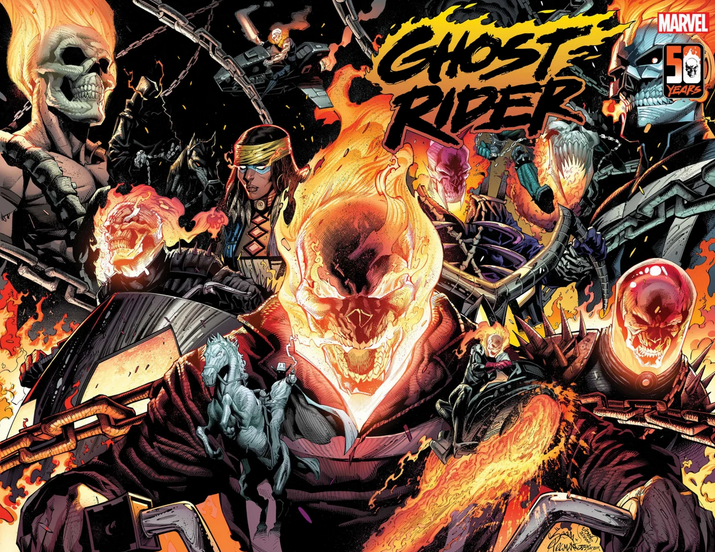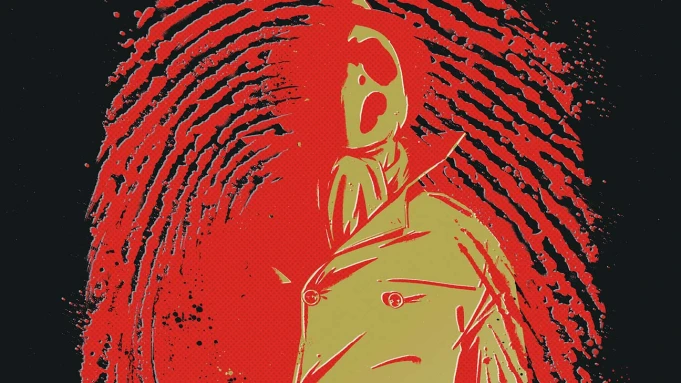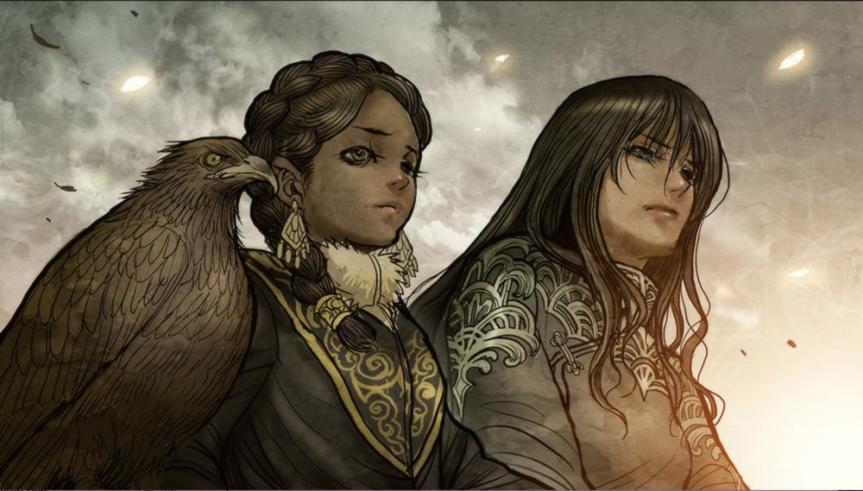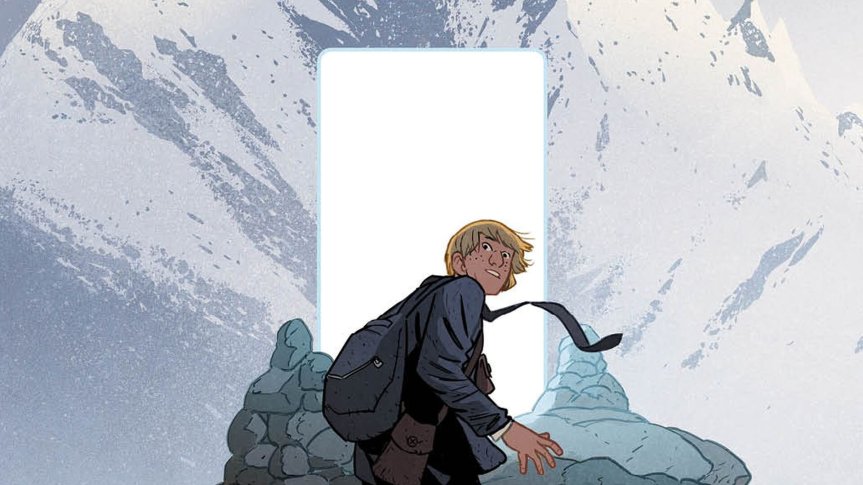(Originally posted on September 23, 2021 by Isaac Payne)
In the September 2021 issue of Galaxy’s Edge, Jean Marie Ward interviewed Jonathan Maberry, prolific writer and editor of Weird Tales magazine. Check out the full interview below …
#
About Jean Marie Ward
Jean Marie Ward writes fiction, nonfiction and everything in between. Her credits include a multi-award nominated novel, numerous short stories and two popular art books. The former editor of CrescentBlues.com, she is a frequent contributor to Galaxy’s Edge and ConTinual, the convention that never ends. Learn more at JeanMarieWard.com.
#
Confessions of a High-Output Writer
New York Timesbestselling author Jonathan Maberry credits his grandmother, his middle school librarian, and the college professor he once hated most with turning him into writer. But it’s doubtful they or his former mentors, Ray Bradbury and Richard Matheson, could have foreseen how far their lessons would take him. The short list of his honors includes five Bram Stoker Awards, the Inkpot Award, three Scribe Awards, multiple teen book awards, and designation as a Today Top Ten Horror Writer. His many novels and anthologies have been sold to more than thirty countries. As a comics writer, he has written dozens of titles for Marvel Comics, Dark Horse, and IDW Publishing. V-Wars, the shared world anthology series he created for IDW Publishing, has been made into a Netflix series starring Ian Somerhalder, who previously appeared in Lost and The Vampire Diaries. Maberry’s young adult Rot & Ruin series was adapted as a webtoon for cell phones and is in development for film. As if that wasn’t enough, he currently serves as the president of the International Association of Media Tie-In Writers AND as editor of the iconic Weird Tales magazine.
Huffing and puffing to keep up, Galaxy’s Edge talked to Maberry about his origins as a writer, the experiences that shaped him into a multi-genre powerhouse, and the seminal role Black Panther played in his life.
Galaxy’s Edge: You’ve said many times that you always wanted to be a writer. As a young child you made stories up about your toys. What pointed you in the direction of horror?
Jonathan Maberry: My grandmother, who was my favorite blood relative, was basically a grownup version of Luna Lovegood from Harry Potter. She was that person who believed in everything. She believed in what you call “the larger world”—ghosts, goblins, and by extension, things like UFOs and alternate dimensions in the realms of fairy. She believed in everything. She was born on Halloween, and she embraced that. She only had pets that were born on Halloween. In fact, she gave me the very first pet I ever had, my dog Spooker. There’s a picture of him behind me on the wall. [My grandmother] gave him to me because he was born on Halloween.
She got me involved in the spooky stuff. But what’s interesting is, not only did she tell me all the folklore tales and some of the fictional tales of monsters, she encouraged me to read the anthropology, the science, and the commentary on why people believe these things. Even though she was very broad in her belief systems, she felt that there was a connection to our real world. She felt that what we consider to be the supernatural—or the preternatural, or the paranormal (there are different variations)—are all parts of a world we will eventually learn how to measure, and that we only know about one hundredth or 1 percent of what we will eventually know. So, she considered these things to be future science.
From there, I started learning about vampires, werewolves, and all sorts of things. Of course, I started watching the TV shows and the movies, and became hooked on those. I loved the folktales, the fiction, and the nonfiction. In fact, the first couple of books I did on the supernatural were nonfiction, exploring beliefs about the paranormal and supernatural around the world throughout history. I wrote those books because of her and because of the things she’d exposed me to as a kid.
Galaxy’s Edge: This is probably unfair to your hometown, but my mom was from Philadelphia, and I lived in the suburbs from 1969 to 1977. So, I’ve got to ask, how much did living in Philadelphia during Frank Rizzo’s tenure as police commissioner and mayor shape your vision of monsters?
Jonathan Maberry: Well, it didn’t so much shape my vision as monsters as it did shape my vision of a corrupt police state, which may have informed my love of writing thrillers with corrupt officials. [Rizzo] was not only corrupt, he was notoriously and openly corrupt. It was a reinforcement of the same skewed view of how power was used by those in power over those who didn’t have power that I had learned from home. Because I grew up in a very abusive home with a very dictatorial and violent father in a blue-collar neighborhood that was very violent. A lot of abuse.
There were also a lot of people in the neighborhood who were involved in the police department in one way or another. Rizzo was a policeman’s mayor, you know. Not a good policeman’s mayor, but a policeman’s mayor. He would have been a really good mob boss had he been in Chicago in the ’Thirties. It gave me a very jaundiced view of political power. And the fact that for him, it wasn’t even about party. It was just power. He was a manipulative sociopath in power. That’s a pattern we’ve seen elsewhere.
Galaxy’s Edge: Yes, it is. I also wondered what role did observing this abuse of power play in your writerly activism. You’re involved with multiple writers’ organizations. You founded the Philadelphia Liars Club and Writers Coffeehouses across the country specifically to help writers. Was there a connection between the two?
Jonathan Maberry: It was more of an economic thing, because in the neighborhood where I grew up—actually, in my own household—reading was not encouraged. In fact, if we were seen reading a book, the most commonly asked question was, “Are you trying to get above yourself?” My father used to ask that all the time. And of course, the thought I had was, “No, I’m trying to get above you.”
The desire to educate myself out of that environment was really strong. Not only was reading not encouraged, creative expression of that sort was viewed as impractical and something of an insult to people who are hard-working blue-collar stiffs, which is not the case. You rise to the call of your genius. Whatever you feel you do best is what you should try to do. Writing is what I always wanted to do, and I found so many other writers who had been browbeaten by everyone they knew, even well-intentioned family members, because it’s too hard, you’re not gonna make any money, you’re not gonna do this. It’s all this negative propaganda that is parroted at all levels. It comes down from somewhere, but it filters through family, from neighborhood, through high school counselors.
My high school counselor tried to talk me out of being a writer. That neighborhood, that environment, was all about getting out of school, getting into a factory, and paying the bills. That was it, and that’s doom to a writer. I mean, it’s worse than a prison sentence.
I got some unexpected help along the way from incredible writers who I met in most unlikely circumstances, Ray Bradbury and Richard Matheson, in particular. They didn’t need to help me. It was of no actual benefit to them. But they saw someone who was trying to write their way out of where they were and into the future they wanted. And they helped.
As an inspiration, that can’t be beat. So, whenever I had the opportunity to use my position, my connections, my experience, whatever, to help other writers move up and break through the propaganda, break through the self-doubt, into the opportunity to do something worthwhile with their skills, I took it. It’s tied also to a viewpoint that I saw a lot as a kid, but also saw reinforced during the economic downturn of 2008-2009.
There are two camps of writers. One camp seems to feel that if somebody asks you for advice, or a lead, or something, and you give it to them, that means you’re denying it to yourself. That camp feels opportunities are finite, that open doors are finite, that if you help someone else, you’re screwing yourself. It’s a very fear-based viewpoint. It’s also a very popular viewpoint. The other camp believes that if writers help other writers to become better writers, more good books will get written. Those good books will attract more book sales and more readers, and everyone will prosper.
One approach is fear-based, and the other is optimism-based. I’ve always felt that the optimism-based approach is what’s going to get us out of the mud that we’re stuck in when we grow up in an environment like that and have been propagandized like that.
Galaxy’s Edge: Your first fiction series, the Deep Pine Trilogy, drew a lot on the knowledge and love of folklore your grandmother inspired. But your later works, notably, V-Wars and the Joe Ledger series display a profoundly scientific bent. What drew you to blending science and horror?
Jonathan Maberry: Again, that started with my grandmother encouraging me to read the science, the folklore, even the medicine, to explain things. For example, a lot of the beliefs about evil spirits coming to draw the life out of a sleeping child were really ways for less educated people in earlier centuries to explain things like sudden infant death syndrome. If you look at the science of it, you can understand the belief. With that comes also understanding of the needs for [the belief]. I’ll explain with SIDS.
A healthy child goes to bed and dies. There are no marks. There’s nothing to suggest that it was harmed. But maybe the window was open, and people say, “Oh, something got in.”
But say this is the 17th century, and a child died under those circumstances. It feels so arbitrary that it puts people out of sync with their religious beliefs. Why would a loving God allow an innocent child to die like that? So, the parents go to their priest, which was the common thing to do, because the local church was the center of knowledge and where information was shared. The priest says, “Well, you must have sinned in some way, say these prayers, put up these relics, and it won’t happen again.” Sudden infant death syndrome rarely happens again within the same family. So, the next child doesn’t die after the rituals, and the people have a reinforcement of their faith.
Thus the presence of the belief in a monster that has come and taken the life of the child becomes necessary to reinforce their belief in a protective God. Reading the science of that not only gives me a historical and clinical perspective, it gives me real insight into character motivations as needs, and the way in which a story then evolves into a satisfying conclusion.
Galaxy’s Edge: Did meeting Richard Matheson have anything to do with it?
Jonathan Maberry: Richard Matheson is the biggest influence on my style. Even though I write in about a dozen different genres, almost everything I write is built on the structure of a thriller, the race against time to prevent something from happening—as opposed to a suspense, where we’re all in the moment or in a mystery we’re solving. The thriller is that race against time. {Matheson’s] novel, I Am Legend (which he gave me a copy of for Christmas 1973) is a prototypical thriller. I mean, it’s a prototype for the thrillers that came afterwards.
[In I Am Legend] something comes up. A big calamity ends the world. You have the apocalyptic element of the story. You also have a science element to the story because it was the first time that a horror story or the genre of science fiction horror used actual science to try to explain itself.
Prior to that science fiction horror like Dr. Jekyll and Mr. Hyde or Frankenstein made references to chemicals or galvanism without going into any detail. In I Am Legend, [Matheson] actually went into the experiments to find bacillus vampiris, which created the vampire plague. He gave us the scientific explanation, the step-by-step. That made it so much more real. The story became more riveting and more threatening to the reader, because now that line between reality and fiction is blurred. That makes it a really compelling thriller.
I’ve taken that model and applied it to almost everything I’ve written. I also use this old con man saying: “Use nine truths to sell one lie.” I build my fiction on a scaffolding of pretty solid science. I do a lot of research, so it’s harder for the reader to know when I have stepped off into fantasy. That started with Matheson and a lot of what Matheson told me when I was a kid.
Galaxy’s Edge: Fifteen-years-old is a very impressionable age, isn’t it?
Jonathan Maberry: Yes.
Galaxy’s Edge: You imprinted on him.
Jonathan Maberry: Well, I met him when I was 12. It was the middle school librarian at my school in Philly who introduced me to him, Bradbury, and others. There was a group of writers who would meet occasionally in New York, and she worked as a kind of informal secretary for them. She dragged me along, partly as baggage and partly because she knew I wanted to write. They took me on as a pet project. All of these great writers, Arthur C. Clarke and Harlan Ellison—whoever was in town—took time to give me advice, like they were competing with one another to give me the best advice that night. I’m really cool with that kind of attention. In fact, the tenth-anniversary edition of Ghost Road Blues, my first novel, has the last ever cover quotes from Bradbury and Matheson.
Galaxy’s Edge: Oh, how wonderful! Now you’re paying forward the help you received.
Jonathan Maberry: Which I should. We should all do that, because there’s not one person who has ever gotten anywhere significant without help. And often, too often, people don’t pause to explain that help was there, who helped them, or to even focus on their own gratitude for what happened. You know, it’s not all about us. It’s literally about us—the community, not the individual. I get so jazzed seeing people take that step, get that deal, or hit a list. It’s like an ongoing party.
Galaxy’s Edge: Returning to the subject of science and pseudoscience, we both grew up in a time when educators and behaviorists believed that growing minds should be shielded from the horrors of things like Weird Tales, EC comics, and Hammer Films. As evidenced by your YA titles, such as the Rot & Ruin series, you see things differently. Why is horror important for young adult readers?
Jonathan Maberry: Because horror is almost always a metaphor for things that are happening in real life. I grew up, as I said, in an abusive household, a very violent household, and a violent neighborhood. There was nobody shielding me as a kid. As a result, I think I got a more clear and well-balanced perspective on life than I would have had if I had been sheltered. Sheltering someone from immediate harm—like pulling your kid away from a hot oven—okay, that’s smart. But not allowing the kid to understand the nature of danger, the nature of heroism, the nature of survival, or all the different qualities that they will need as adults? Sheltering them from that is silly, because it’s not like once they graduate from high school, they suddenly get a download of all these survival skills. They don’t. They have to acquire them along the way.
I remember just talking to my friends as a kid. We were a lot deeper than the adults thought we were. All kids are deeper than adults think they are. To shelter them is a great way to prevent that intellectual growth, empathic growth, and societal awareness. Anytime you shelter, you blind. Anytime you allow the kid to see and then make decisions, and form their own opinions, you’re encouraging growth. It’s useful if parents are there to have conversations about it, but not to stand in the way.
Galaxy’s Edge: You’ve worked extensively in comics, television, and animation. How difficult was it to switch from writing novels and short stories to scripting comics and other broadcast media?
Jonathan Maberry: Well, I haven’t actually written TV scripts yet. I’ve had stuff adapted. I was executive producer, but I was not actually writing the scripts. I haven’t done that yet. I’m studying the form because I will be doing that.
As far as comics go, comics were a bit of a culture shock for me. I mean, I grew up with comics. I was a Marvel kid. I’ve read all the Marvel Comics. But to write them? I write very long novels. My first novel is 148,000 words. It’s a long novel where you can have long conversations with characters, long descriptions, long interior monologues, and so on. But you can’t in comics. Brevity is very important. But also with comics, you have to realize that it is no longer a solo act. With a novel, it’s you and your laptop. With comics, you write the script. You describe what’s in each panel, so you give the art direction. Sure.
But then the artist comes in, and the artist’s A game is to do visual storytelling. You have to learn how to not yield control but share the process, so that they are able to do their best work while you’re doing yours. Then the colorist, and the letterer all have artistic contributions to make. It’s a much more collaborative process. I’ve been told by friends of mine who have gone from comics to writing TV, that it’s excellent training for writing for television, because TV and film are also collaborative. I’m now in the process of pitching a TV series with a couple producer friends, and everything is collaborative. We all have strong ideas, but it’s not one person’s gig. So I learned a lot of that from comics.
One funny thing happened when I just started writing comics. I love dialogue. So I had a lot of dialogue in one of my first comics, and the artist very politely said, “At any point, would you like the readers to be able to see the art?” And I’m like, “Oops.”
It’s funny, I had already been warned about that by Joe Hill, who is the son of Stephen King, and a great writer himself. [Hill] had had almost exactly the same conversation with Gabriel Rodriguez, who was his artist for Locke & Key. Joe said, “Do your draft, and then cut it back by 80 percent.” And I’m thinking, “I don’t need to do that.” Then I got that email, and it was: “Oh, yeah, I need to do that.” The comic was better for it, by the way…
Friends of mine, like Gregg Hurwitz, who wrote Batman and a lot of TV, said, “Writing an issue of comics is very similar to writing an hour of TV drama.” Even the beats are the same, because you have to have dramatic beats for ads and page breaks, which are not that dissimilar from the beats for commercial breaks. He said, “It’s about 75 percent. If you can write a comic book, you’re 75 percent there for how to write a TV script.”
Galaxy’s Edge: Speaking of comics, I didn’t realize when I was drafting my questions that the way you got involved with the Black Panther comic was among the most important events of your life, both in terms of your introduction to the comic, and later in terms of writing it. Would you mind talking a little bit about that?
Jonathan Maberry: When I was a kid, I got involved in Marvel Comics in a big way. I was really a huge fan of Marvel, my favorite comic being The Fantastic Four. The character of the child of the Black Panther was introduced in one of the early issues. I think it was issue 54 of Fantastic Four.
My father, who was deeply racist and involved in the Ku Klux Klan, was very upset that I was reading a comic in which a black man was a king, a superhero, and a scientist. He tore the comic up. He knocked me around for even having it. But a couple of years later, I took another issue of that comic in which the Black Panther appeared to my middle school librarian, the same one introduced me to Matheson and Bradbury. I said, “I’d get in trouble if I show this to my father. Can [you] tell me about this?” And she said, “Well, that particular issue is about apartheid.” I had no idea what that was.
[I showed her] another issue that I brought with me, and she said, “That one’s about the Jim Crow laws.” She kept asking me if I knew about these things, and I didn’t, because all that had been suppressed in my neighborhood. I met no one of color until I was in seventh grade, not one person. I wound up diving deep into an understanding of racism and intolerance. As much as Philadelphia is the City of Brotherly Love, there was a lot of racism there. In certain parts of the city, it was pretty intense, especially in the ’Sixties. That understanding opened my eyes. You know, you have a choice. You can close your eyes and pretend the world is what you were trained to believe, or you can keep your eyes open to see the world for what it actually is.
I don’t believe in closing one’s eyes. The old nature versus nurture thing is actually an imperfect equation. It’s nature versus nurture, versus choice. Choice is a big thing. I chose to keep my eyes open.
I went diving deep into understanding racism. It changed the course of my life and split me from my father forever. Every part of my personality, every part of my understanding of the world and fairness and everything of history pivoted on that moment. It is the most important single moment of my life.
Roll forward to 2008-2009. I had just started writing for Marvel Comics, and Reginald Hudlin who is the founder of BET, an Academy Award-winning producer, and was then the writer of Black Panther, heard this anecdote. He suggested to the editor-in-chief of Marvel that when he stepped down, they have me write the comic.
Now, this was a challenge. At this point, Black writers were writing the Black Panther comic, and I agree with having Black writers write that comic. It’s the iconic, first Black superhero ever. But that child had saved my life too. It had changed me. Just as it changed the lives of a lot of Black kids who found that character, it changed my life as a White kid who found the character. And they asked me if I would write a comic which, of course, I wanted to write. I actually cried when I was told that they were offering this to me.
But also, because I had been teaching women’s self-defense for so many years, including 14 years at Temple University, they made a change in the character. T’Challa got injured in the comic, and his sister Shuri had to step up to become the Panther. So what they handed me was the feminist Black Panther comic to write, which I did for two years. It was one of the greatest honors of my career, and so much fun. And I’m pretty sure that my father was spinning in his grave at warp speed because this was everything he would have hated, and it’s everything that I became because that character help split me off from him.
It’s one of my favorite memories, and one of my favorite things to say is: “Yeah, I was part of that actual world. I was part of the Black Panther. I have my own guest membership in Wakanda.”
Galaxy’s Edge: Amazing. Simply amazing. You never know where the words you put on the page will take someone you never met.
That’s an impossible act to follow, but I do have a couple of questions left. With all the articles, books, comics, greeting cards, and everything else you’ve written, what prompted you to add editing to your resume?
Jonathan Maberry: When I got into novels, which was only 2006, I thought that was all I was gonna do. I had no interest in writing short stories. Then I was invited to write a couple of short stories for different anthologies. I liked the process, but I generally do not do a project unless I become familiar with the other players. So, I started having conversations with the editors, getting insights into what they do and seeing how much they loved it. You know, they’re the first people to read stories [they’ve commissioned] by their favorite writers. I said, that sounds like Christmas morning.
So, I started putting out feelers. But the way I started editing my World War Z anthologies was kind of funny. Max Brooks had been editing an anthology of G.I. Joe stories—the little Hasbro toys. He invited me to write a novella for it, which I did. He had originally planned to do a couple of different anthologies for that same publisher, IDW Publishing. But after [the G.I. Joe] project, he had to go and do something else.
So IDW asked me if I would like to edit the next anthology. I had just finished reading a whole bunch of shared world anthologies, and I thought, “Wow, that’s kind of fun. If I’m gonna do one, I might as well do one where I can play too.” Generally, the editor of an anthology does not contribute a story. But in a shared world, they usually create the world, write a framing story, and other people write individual stories.
So, I pitched one about a plague that turns people into vampires. It became V-Wars, my first anthology, and I loved it. I curated it. I invited those friends of mine who were really good writers, but who were also of the same emotional bent as me in that I felt they were good-hearted people, people who were generous with their colleagues, especially with newer colleagues, and played well with others. I do not work with people who are prima donnas. It’s just not worth the effort. I want people who are having fun but also professional. I fell in love with them.
I’ve edited 18 anthologies. Then later on, a producer friend, who was involved in the return of Weird Tales magazine, asked if would I be interested in coming aboard to help curate and edit some issues. I started out as consulting editor or editorial director—I think that was the first title. But by the second issue, I was actually the editor. And well, I’m working with my next two issues simultaneously.
Galaxy’s Edge: That is a heavy workload. Anything related to a periodical is a full-time job.
Jonathan Maberry: Yeah, but I had really interesting training. I went to Temple University School of Journalism, and I had a couple of teachers, notably John Hayes, who was a teacher I hated while at school, and now I wanna put him up for sainthood. He taught me how to be a high-output writer, which is a skill set. I didn’t know I would like to do that. Turns out it’s where I’m having the most fun. I wouldn’t have taken on the editorial gigs had I not felt that I could work them into my schedule while still writing three to four novels a year and short stories. I’m having a blast doing it. Yeah, it makes for some long days sometimes, but it’s a long day doing what you love. It’s not like it’s a hardship.
Galaxy’s Edge: We’re coming up on the end of the interview. Is there anything you’d like to add?
Jonathan Maberry: For any writer out there who’s reading this, the Writers Coffeehouse has, because of COVID, moved online. You can find us on Facebook at Facebook.com/groups/TheWritersCoffeehouse. It is free. It is a community of writers helping each other with no agenda other than to help each other. So go check it out on Facebook. Also, if you go to my website, JonathanMaberry.com (only one “Y”), there’s a whole page of free stuff for writers—comic book scripts, novels, samples, and so on. It’s all downloadable PDFs. Go grab what you need.
Copyright © 2021 by Jean Marie Ward
~~~





